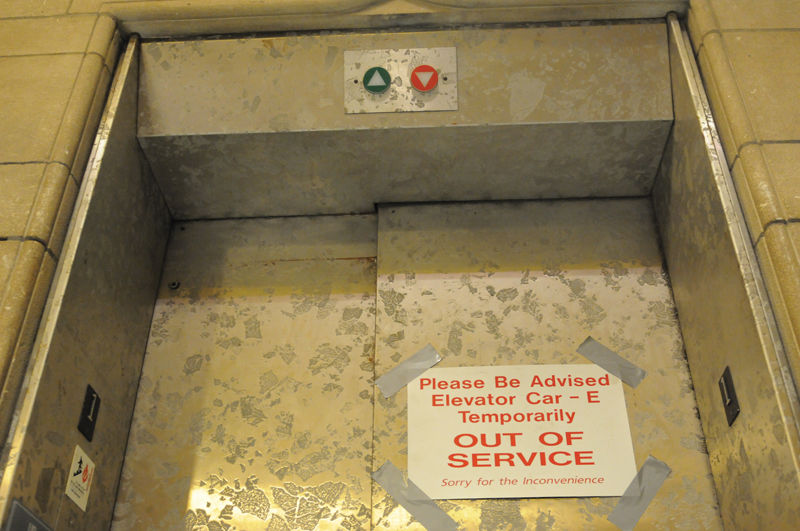Welcome Back: Wait no more: Cathedral elevators to be updated
August 19, 2014
After more than 80 years with the same setup, the Cathedral of Learning elevators are finally getting some much-earned TLC.
The first steps toward installing the new elevators will begin this September when two elevator cars will be shut down for three to four weeks at a time to align the rails on which the cars ride. By the spring of 2016, Pitt’s Facilities Management Department plans to have all of the elevators transitioned to a modern “destination-based system” used in buildings like the U.S. Steel building, the new PNC tower Downtown and the Empire State Building.
The new system by OTIS Manufacturers will include brand new elevators which have no floor buttons inside the cars. Instead, riders will press the floor they want on a touch screen wall panel outside of the elevators. The system will then tell the riders which elevator car will take them to the floor they want on an 15-inch LED screen in the wall panel. Then, once riders are inside the car it will “know” which floor to stop on without any more button pushing.
Dan Marcinko, a facilities management administrator, said each floor will have wall panels, including six on the ground floor and six on the first floor, where there is the most elevator traffic..
“We plan to modernize the Cathedral elevators like they’ve never been done before,” Marcinko said of the $10.44 million project.
Pitt’s Department of General Services will run the project with Facilities Management and a team of architects, engineers and elevator manufacturers from Mascaro Construction, which is based near the North Side.
Between September and December of this year, the elevators will be out of service — two at once, for a stretch of a few weeks each time. Two cars will then be shut down for about three months while the new system is installed on those two cars only, according to Facilities Management senior manager Chris Niemann. During the spring 2015 semester, the first wall panels will be installed, along with new doors and door frames on the elevator cars. The rest of the cars will then be upgraded over the following year.
Marcinko said part of the reason why Pitt community members so often complain about the Cathedral elevators is “wear and tear and age,” — the elevators are the same ones installed when the Cathedral was built in the 1930s and the engines — manufactured by Westinghouse in 1926 — haven’t been upgraded since.
“The ultimate goal is to increase the efficiency of the elevators,” Niemann said.
Niemann said Facilities Management plans to help students get around more effectively by letting them know as soon as possible, via Twitter and Facebook, when elevators will be out of service so that they can plan ahead.
The OTIS system will also “learn” through routine where they should be during which parts of the day. Niemann said the cars will wait near the ground floors during the morning hours and during the upper floors during the afternoon hours when most people are likely to be leaving the building.
There will be no changes to the number of elevators, but Marcinko said there will be 37 additional stops opened along various floors once the project is completed. Facilities Management project manager Bill Kane said they plan to have students help teach people about the new elevators and post videos about them on Facebook and the Facilities Management YouTube channel.



